
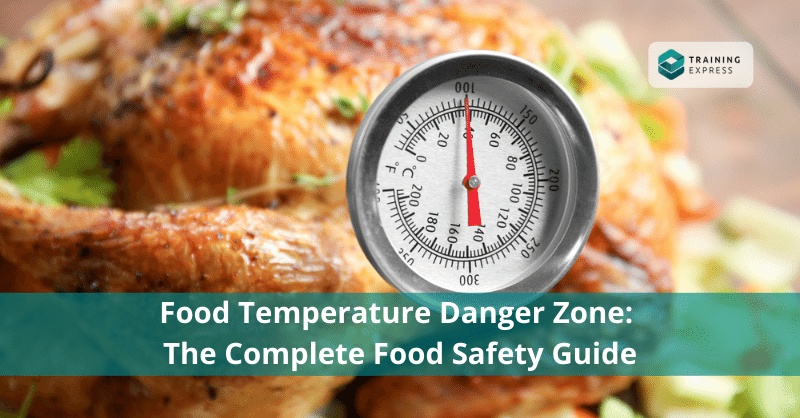
When food stays out at room temperature for too long, the quality and freshness get ruined. Maintaining food temperature to keep it outside the food temperature danger zone is important for many reasons. And it is quite simple to do with just a bit of knowledge. Eating food kept safe from the food temperature danger zone is necessary. It saves the eater from potentially harmful health effects.
Also, being aware of the food temperature danger zone allows you to stay compliant with the state guidance of food and health inspection. This article will discuss in detail the right temperature for food safety. And we’ll also touch upon some useful safety tips you should follow to avoid food poisoning. Without further ado, let’s get started.
Table of Contents
Why is the Food Temperature Danger Zone Important?
When you allow food to enter the food temperature danger zone, bacteria can grow to unhealthy levels. And this growth of bacteria will cause the food to get spoiled. Moreover, dangerous bacteria growth like this occurs without any visible signs that the food is unsafe for consumption.
Sometimes, the food might smell and appear normal. However, it could actually contain harmful amounts of bacteria that can cause foodborne illness. And that is why being aware of food temperature danger zones is extremely important. If you are in the food servicing industry, it is your responsibility to keep foods out of the danger zone. So, you have to use approved methods to chill, heat and store food.
Food Temperature Danger Zone:
What is the Right Temperature for Food Safety?
Food temperature danger zone refers to the temperature when bacteria can easily grow on your food. And if you consume this contaminated food, it can have serious repercussions for your body. Food temperature danger zone is generally considered between 5 centigrade and 63 centigrade. In between this temperature, range bacteria finds the most appropriate condition to multiply. And that is what we always need to try to avoid.
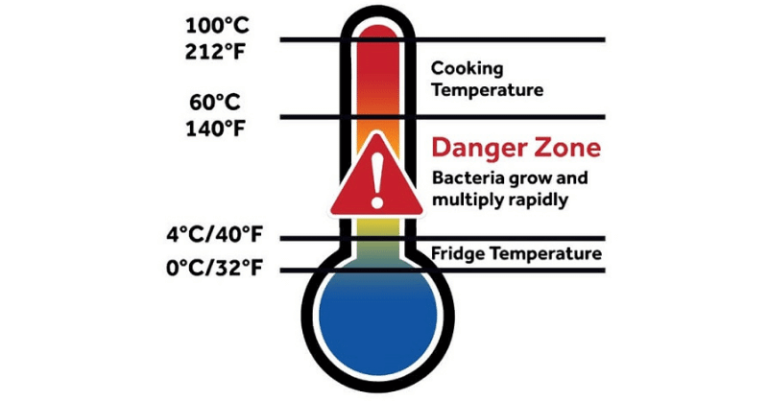
To keep the food fresh for longer hours, the food temperature danger zone dictates you keep your food below 5 centigrade. It is because, below 5 centigrade, the multiplication of bacteria starts to slow down.
Furthermore, when you keep your food in the refrigerator, it slows down the spoilage process. That is because, at low temperatures, bacteria become dormant and remain that way as long as the temperature is low enough. Therefore, you should always store your frozen food at -18c or below.
How to be Safe from
The Food Temperature Danger Zone?
One of the simplest ways to keep food away from the food temperature danger zone is to regularly monitor the food temperature. When you are aware of the temperature, you know exactly what to do. The written rules of temperature control safety apply when cooking and preparing food or food products. Also, the rule applies while holding different types of food at a buffet or salad bar.
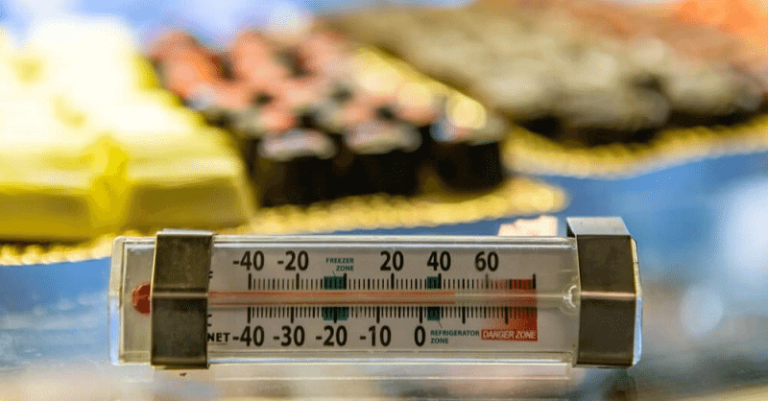
The following list entails a few industry insights regarding how to ensure safety from the dangers of the food temperature zone.
Suggested reading:
Food Temperature Danger Zone:
Food Safety Tips You Can’t Avoid
Food poisoning can cause long term health problems. So to save yourself and your family from food poisoning, be aware of the food temperature danger zone. Also, follow these 7 simple food safety tips to stay safe.
Cook Food Thoroughly
While meat and veggies are delicious to eat, they can be equally dangerous for your health if not cooked correctly. Sometimes, it could be difficult to understand if your food is cooked all the way through or not. You can use a food thermometer to ensure the food is cooked to the right temperature.
Additionally, always cook your meat and fish at 63 centigrade. However, for hamburgers or other grounded meat, cook at 71 centigrade or higher temperature. For further protection, store the food at 60 centigrade or higher temperature until you are ready to serve. It will prevent bacteria from multiplying and causing any sickness.
Store the Food at Safe Temperature
We hate to burst your bubble, but your work isn’t done just because you cooked the food at the correct temperature. In reality, food safety doesn’t stop once you are done preparing your meal. Make sure to store the leftover food within the correct temperature range after you are done prepping, cooking and serving the food.
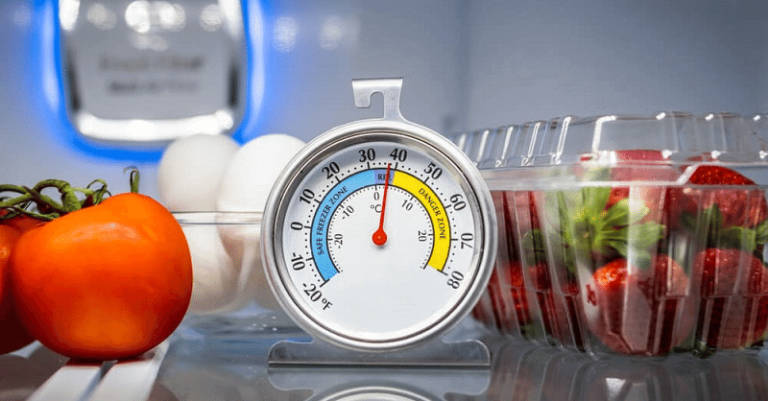
Also, do not leave out your food for an extended period of time, even if you are setting up a buffet or a spread. If the food sits out unrefrigerated for too long, all your efforts will go to waste. So, refrigerate your food within two hours of cooking it.
Don’t Leave Your Food Out
Leaving your food uncovered exposes it to debris, viruses, insects and, of course, pathogens. Not to mention, leaving your food uncovered increases the likelihood of a dish becoming contaminated. The standard protocols dictate not to leave out food for more than two hours, both indoors and outdoors.
While leaving food out may be more convenient, putting it in the fridge is the best step you can take to prevent food poisoning.
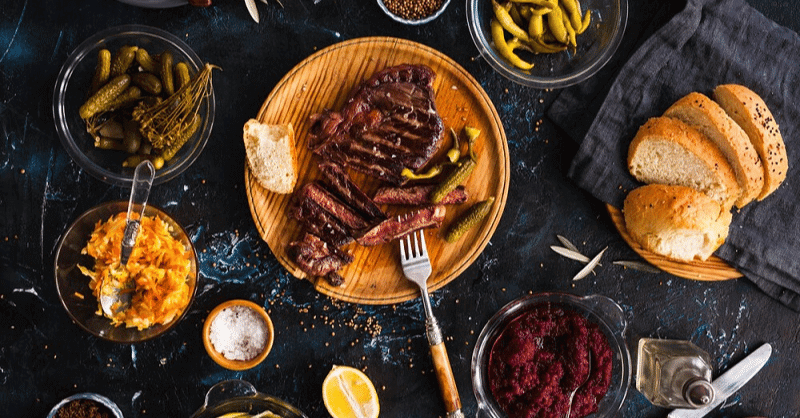
Colour Code Your Prep Materials
Use a colour-coded prep system for produce and meats. It will prevent cross contamination and all the dangers that come with it. You can implement this by designating colour cutting boards, bowls and utensils for different foods.
For instance, use a red cutting board for chickens and a green cutting board for chopping the vegetables. For fruits and other stuff, you can use a blue cutting board. Colour-coding prep materials is an easy way to avoid transferring bacteria between surfaces and food.
Examine Your Food Before Eating
We have all opened a container or a gallon of milk and took a whiff to see if it’s still good to drink. So, it goes without saying that if something smells funny, you should not eat it, but rather throw it away. A prominent telltale sign of food being bad is a sour, rancid odour. Additionally, food starts to smell when it has expired or been left out for too long.
So, always examine your food before eating to stop yourself from falling victim to food poisoning.
Do Not Eat Food Past the Expiration Date
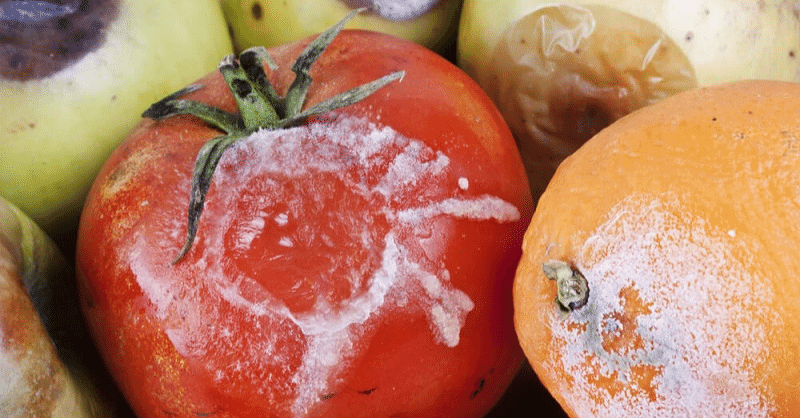
There is nothing more frustrating than reaching into your refrigerator with the plan to make the most wonderful side dish ever. And the moment you open the fridge, you realise the key ingredient that you thought of using had actually expired. The food temperature danger zone dictates that if an item is past the expiration date, throw it out.
Moreover, consuming food past the expiration date or “best by” date can have serious consequences. You might experience physical discomforts such as nausea, diarrhoea and stomach pains. So, toss the expired item with no regret.
Sanitise and Disinfect Materials and Surface After Every Use
When you are meal prepping for a week or getting dinner ready for the evening, it is easier to move through the entire process using the same utensils. And you might rinse or wipe the surfaces every now and then. But the issue is that not sanitising or disinfecting the surface and materials will lead to cross-contamination.
Also, if you don’t disinfect the surfaces, germs will spread, which will lead to sickness. However, using quick and easy disinfecting wipes is probably the safest and quickest way to follow food safety protocols. Since all wipes are not created the same way, it is important to pick the ones you need carefully. For instance, some wipes contain bleach, ammonia, alcohol etc. These can damage your tools and surfaces like wood or stainless steel.
Be Aware of Food Contamination
Lastly, you need to be aware of food contamination, as foodborne illnesses can also be troublesome and have serious consequences.
Interested in building up a career in the food servicing and catering industry? Our Food Safety & Hygiene course teaches you all the ins and outs of the roles and responsibilities of a food supervisor. You will learn about the design aspects of food premises, waste disposal, and implementation tools of FSMS, among others.
Conclusion
Being aware of the food temperature danger zone can keep us safe from any life-threatening conditions. Unfortunately, most people do not realise whether they followed proper food safety protocols without knowledge of the subject matter. We can’t even tell if we were the victims of someone else not following food safety protocols until we fall sick. And by the time we realise, it is too late to go back in time and do something about it.
Hence, following food safety protocols, no matter what time of the year, can not be forgotten or overlooked. Eating safe food starts with following safe food practices. So, implement all the tips and tricks that you have learnt in this article and keep your delectable food fresh. And most importantly, make the food safe for consumption.
Learn More
- Available Courses
- Career Bundles72
- Animal care5
- Law8
- Quality Licence Scheme Endorsed111
- Teaching13
- Teaching & Academics Primary27
- Accounting & Finance Primary29
- Training3
- Design9
- IT & Software43
- Healthcare124
- Marketing31
- Health and Safety400
- Construction48
- Electronics25
- Hospitality22
- Health and Social Care219
- Child Psychology37
- Management370
- Business Skills267
- First Aid70
- Employability264
- Safeguarding75
- Food Hygiene103
- Personal Development1272
 Food Hygiene
Food Hygiene Health & Safety
Health & Safety Safeguarding
Safeguarding First Aid
First Aid Business Skills
Business Skills Personal Development
Personal Development












